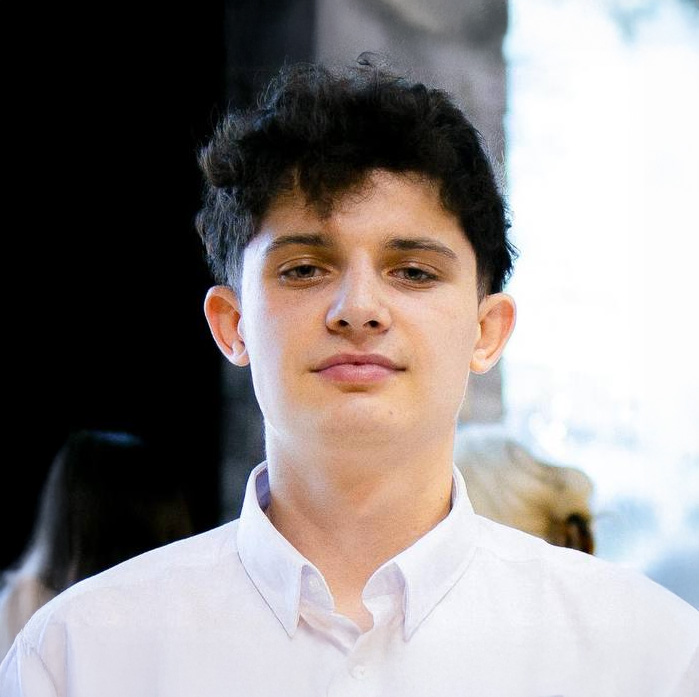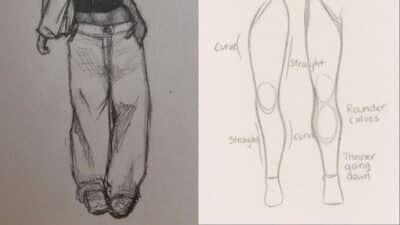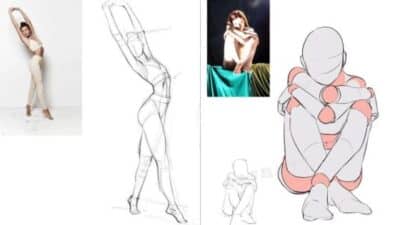Drawing anime girl bodies combines artistic skill with understanding fundamental proportions that make characters instantly recognizable. Many artists struggle with capturing the distinctive feminine features that define anime style, from the delicate shoulder lines to the characteristic curves.
The key to drawing anime girl bodies lies in mastering basic proportions where the head serves as your measurement unit, typically making the full body about 7-8 heads tall with softer, more slender features than realistic human anatomy. This approach helps you maintain consistency while developing your own artistic style.
You can learn this skill through practice with simple shapes and guidelines that break down complex forms into manageable steps. Whether you’re sketching your first anime character or refining your technique, understanding these core principles will transform your artwork from basic sketches into compelling character designs.
Key Takeaways
- Start with basic proportions using the head as a measuring unit for consistent anime girl body structure
- Use simple guidelines and shapes to build the torso, arms, and legs before adding details
- Practice regularly with proper tools and shading techniques to develop your anime drawing skills
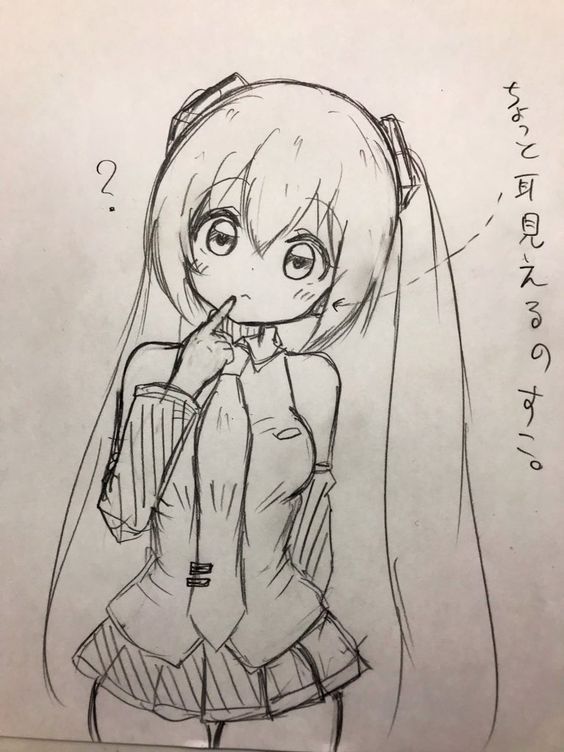
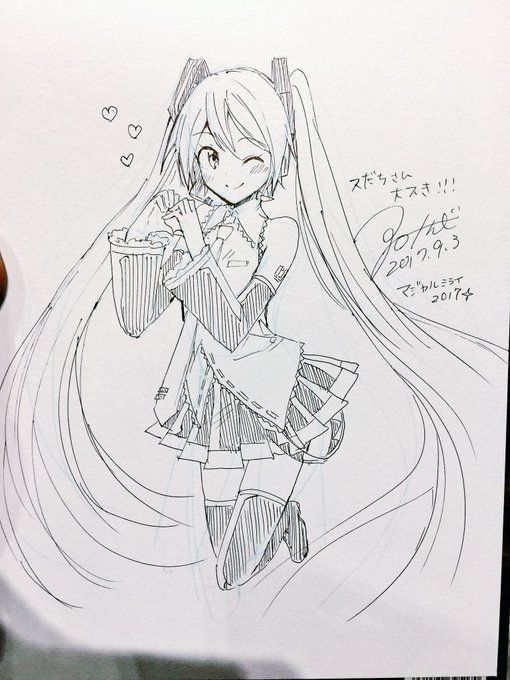
Understanding Anime Girl Body Proportions
Mastering anime girl proportions requires understanding basic human anatomy principles while adapting them to anime’s stylized aesthetic. Female anime characters typically feature softer curves, slender frames, and specific measurement ratios that create their distinctive appearance.
Human Anatomy Basics for Anime
Understanding real human anatomy forms the foundation for drawing convincing anime characters. Study how muscles, joints, and bone structure work together in actual bodies.
Key anatomical points to focus on:
- Shoulder width is typically narrower than hip width in female figures
- The ribcage creates the upper torso’s basic shape
- The spine creates natural curves that affect posture
Your anime drawings will look more believable when you understand how body parts connect. The shoulder connects to the arm through the deltoid muscle. The torso flows into the hips through the waist.
Essential body landmarks include:
- Collarbone for upper chest definition
- Elbow placement at waist level
- Knee positioning at mid-leg point
Practice sketching basic human figures before stylizing them. This builds muscle memory for proper proportions. Even stylized anime bodies follow fundamental anatomical rules.
Proportion Guidelines for Female Characters
Anime female characters typically use a 7-8 head measurement system. This means the total body height equals 7-8 times the head length.
Standard proportion breakdown:
- Head to chin: 1 head unit
- Chin to chest: 1 head unit
- Chest to waist: 1 head unit
- Waist to hips: 1 head unit
- Hips to mid-thigh: 1 head unit
- Mid-thigh to knee: 1 head unit
- Knee to ankle: 1-2 head units
The shoulders measure about 2 head widths across. The waist is narrower, roughly 1.5 head widths. Hips are slightly wider than shoulders in most female anime designs.
Arm proportions follow specific rules:
- Upper arm length equals 1.5 head units
- Forearm matches upper arm length
- Hands measure about 0.75 head units
Your character’s age affects these proportions. Younger characters have larger heads relative to their bodies.
Common Anime Body Types
Anime features several distinct female body archetypes. Each type has specific proportion adjustments that create different character impressions.
The petite type features a smaller overall frame with a 6-7 head proportion system. Shoulders and hips have minimal width difference. The torso appears shorter with a higher waist placement.
The athletic type shows more defined muscle structure while maintaining feminine curves. Shoulders are slightly broader. The waist-to-hip ratio is less pronounced than other types.
The mature type uses 7-8 head proportions with more pronounced curves. The bust and hip measurements are more generous. The waist creates a distinct hourglass silhouette.
The tall/elegant type stretches to 8-9 head units in height. Limbs appear longer and more slender. The neck is elongated, and the overall frame appears graceful.
Each body type serves different character personalities and story roles. Choose proportions that match your character’s intended age and personality traits.
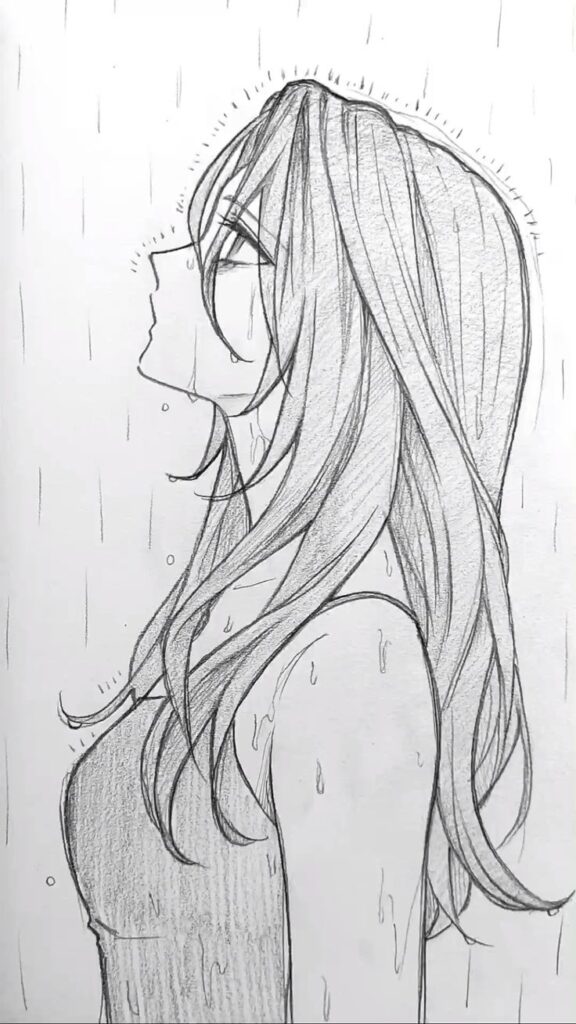
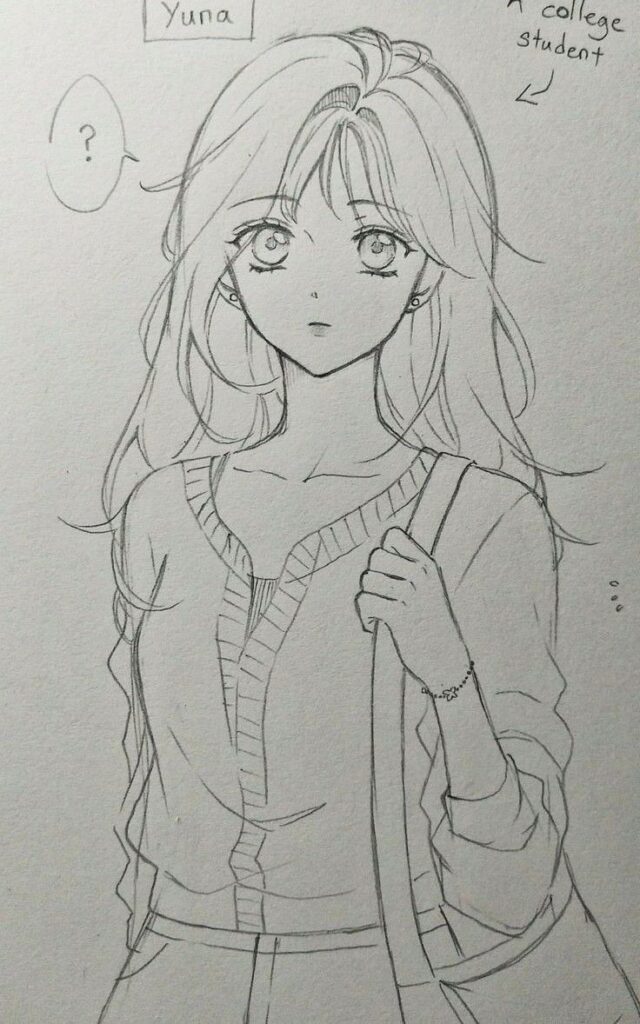
Essential Tools and Materials
The right tools can make a significant difference in your anime girl body drawing experience. Both traditional pencils and digital tablets offer unique advantages for creating expressive character art.
Traditional Drawing Supplies
Pencils form the foundation of your drawing toolkit. Start with a 2H pencil for light initial sketches and guidelines. Use HB or 2B pencils for main line work and details.
Paper quality matters more than you might think. Smooth drawing paper works best for clean anime lines. Bristol board provides excellent durability for finished pieces.
Erasers are essential for refining your work. A kneaded eraser helps lift graphite without damaging paper. White vinyl erasers work well for clean corrections.
Inking tools bring your sketches to life. Fine-tip pens like 0.3mm to 0.7mm create consistent line weights. Brush pens add dynamic thick-to-thin line variation.
Blending tools like blending stumps help create smooth shading effects. Your finger works too, but stumps give more control over small areas.
Popular Digital Tools for Anime Art
Drawing tablets revolutionize digital anime art creation. Wacom Intuos offers excellent pressure sensitivity for beginners. Huion and XP-Pen provide budget-friendly alternatives with similar features.
Software options cater to different skill levels and budgets. Clip Studio Paint excels specifically for anime and manga artwork with built-in screentones and reference materials.
Photoshop provides powerful tools but requires more learning time. Free alternatives like Krita offer professional features without cost barriers.
Digital brushes designed for anime art streamline your workflow. Look for brush sets that include line art, cell shading, and hair texture brushes. Many artists share custom brush sets online.
Layer management becomes crucial in digital work. Separate your sketch, line art, base colors, and shading onto different layers for easier editing.
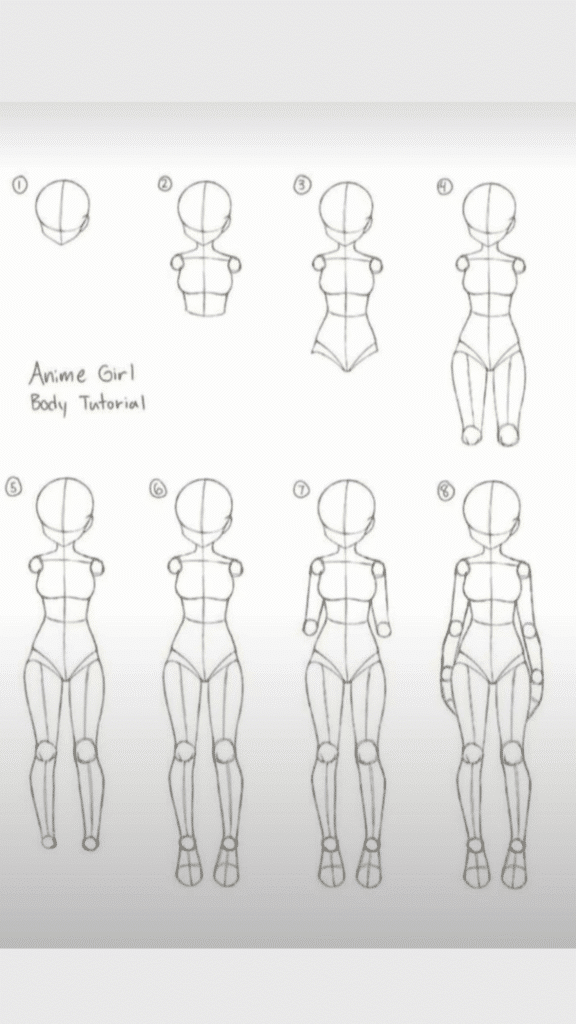
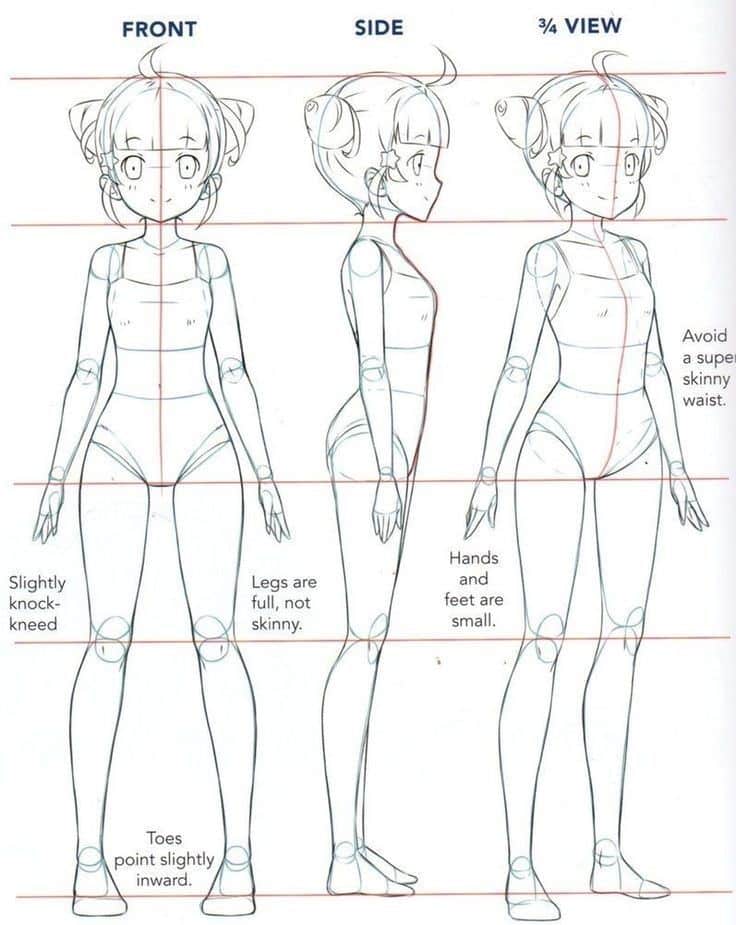
Step-by-Step Guide to Drawing an Anime Girl Body
Creating an anime girl body starts with basic geometric shapes and construction lines to establish proper proportions. You’ll then refine the silhouette before adding detailed limbs, hands, and feet to complete the figure.
Sketching Basic Shapes and Construction Lines
Start by drawing a circle for the head as your main reference point. This circle determines the scale for your entire figure.
Draw a vertical line down the center of the circle and extend it downward. This becomes your center guideline for body alignment.
Create the basic framework:
- Draw 6-7 circles below the head circle, each the same size
- These circles represent the torso, hips, and leg segments
- Space them evenly with slight overlaps
Add a horizontal line across the second circle for shoulder placement. Anime girls have narrower shoulders than the head width, typically 1.5 times the head diameter.
Mark the waist at the third circle with a slightly curved line. The hips sit at the fourth circle and should be slightly wider than the shoulders.
Draw simple stick lines for arms extending from the shoulder line. Each arm segment (upper arm and forearm) equals roughly one head length.
Defining the Silhouette and Contours
Connect your construction circles with smooth, flowing lines to create the body outline. Start from the shoulders and curve inward at the waist.
Focus on these key curves:
- Shoulder to waist: Gentle inward curve
- Waist to hips: Gradual outward expansion
- Hip to thigh: Smooth transition maintaining feminine curves
Anime girls typically have softer, rounder shapes compared to realistic proportions. Keep your lines fluid rather than angular.
Define the torso by drawing two curved lines from shoulders to waist. Make the waist narrower than both shoulders and hips for the classic anime silhouette.
Add the hip line by connecting from the waist to create a subtle hourglass shape. The hips should align with your fourth construction circle.
Sketch the ribcage area with a gentle oval shape. This helps establish the chest area and provides structure for the upper torso.
Drawing Arms and Legs
Begin the arms using your stick guidelines as the center. Draw cylindrical shapes around each arm segment, making them gradually taper toward the wrists.
The upper arms should be slightly thicker than the forearms. Keep proportions slender but maintain some volume for a natural look.
Arm proportions to remember:
- Upper arm length = 1 head height
- Forearm length = 1 head height
- Total arm span = 2.5 head heights
For legs, start with the thigh as your largest segment. Draw it as an elongated oval shape connecting from the hip to the knee area.
The lower legs (calves) should be slightly thinner than the thighs. Taper them gradually as they approach the ankle area.
Anime girl legs are typically longer than realistic proportions. Make the total leg length about 3-4 head heights for the characteristic anime look.
Add subtle curves to represent muscle definition. Keep these minimal since anime style emphasizes smooth, simplified forms over detailed anatomy.
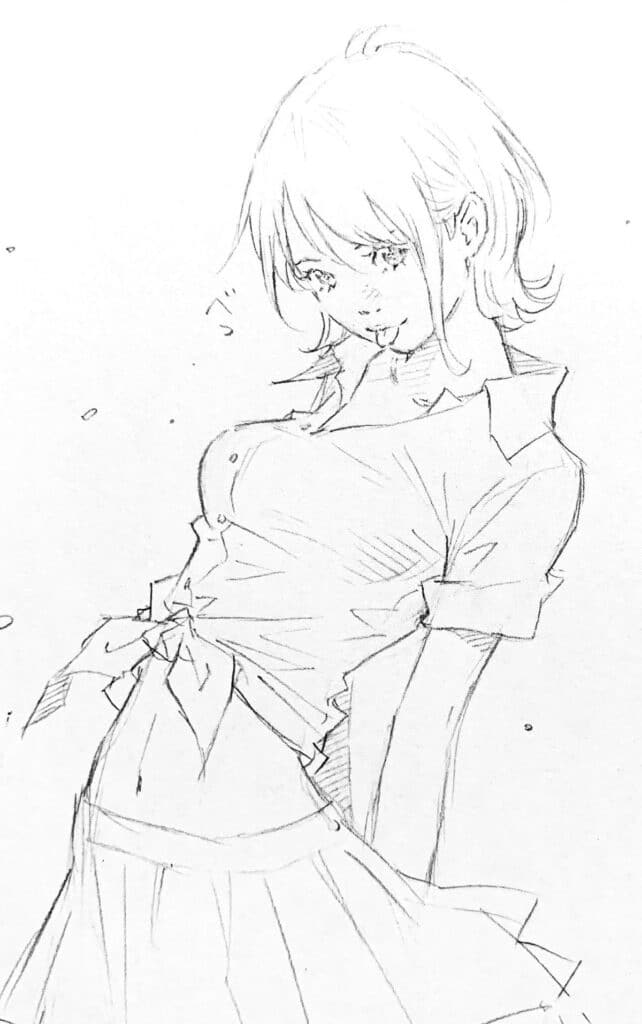
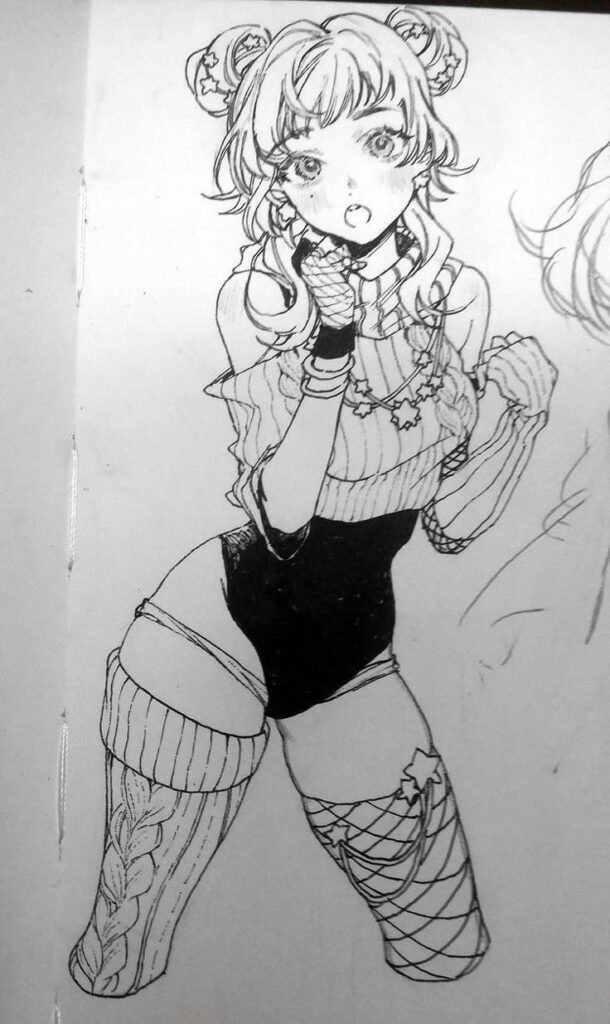
Adding Hands and Feet
Draw hands as basic mitten shapes first, then add finger divisions. Hands should be roughly the same length as the face from chin to forehead.
Hand construction steps:
- Draw a square for the palm
- Add a triangle for the thumb area
- Sketch four rectangles for fingers
- Round the corners and connect smoothly
Keep fingers slender and slightly tapered. Anime hands often appear more delicate than realistic proportions suggest.
For feet, start with a triangular wedge shape. The foot length equals roughly one head height in anime proportions.
Draw feet as simplified shapes without excessive detail. Focus on the overall silhouette rather than individual toes or complex curves.
Position feet naturally beneath the legs. Ensure they provide stable support for your character’s pose and maintain proper perspective.
Add basic ankle definition by creating a slight indent where the leg meets the foot. This small detail helps separate the limb segments clearly.
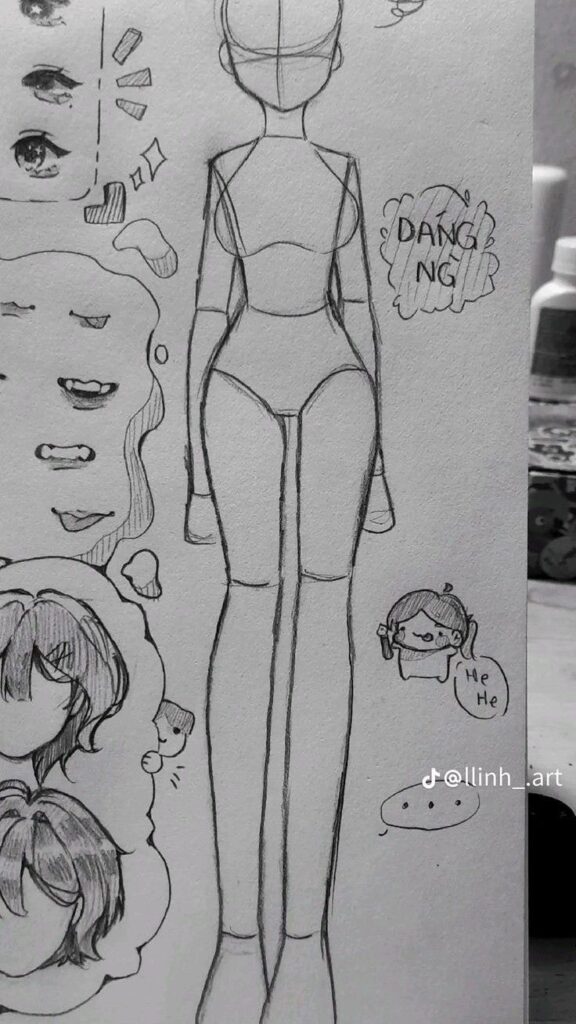
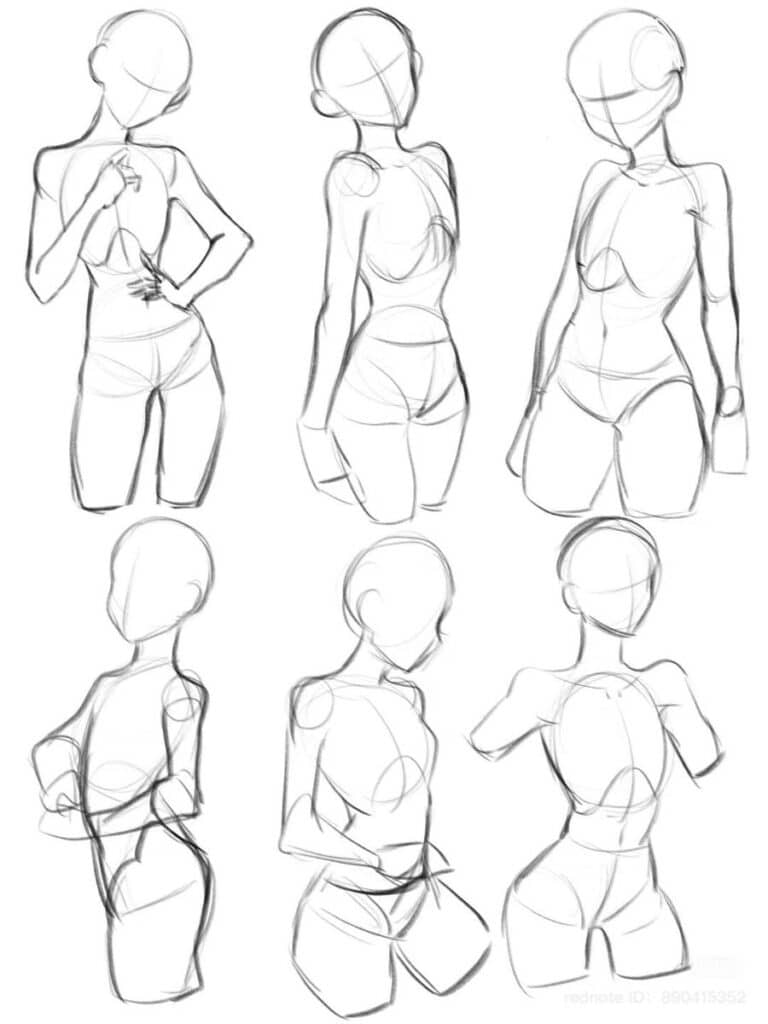
Details That Bring Anime Girls to Life
The right details transform basic anime girl drawings into compelling characters. Facial expressions, hair styling, and outfit choices work together to create memorable designs that connect with viewers.
Facial Features and Expressions
Eyes are the most important feature in anime girl faces. Make them large and expressive with detailed pupils and multiple light reflections. Position them slightly below the horizontal center line of the head.
Eyebrows should be thin and arched. Keep them simple with clean lines that follow the eye shape.
Nose design stays minimal in anime style. Use a small dot, short line, or subtle shadow rather than detailed nostrils or complex shading.
Mouth expressions convey emotion effectively. A small curved line works for neutral expressions. Add slight upturn for happiness or downturn for sadness.
Cheek blush adds cuteness and life to your character. Place small circles or ovals on the cheek area using soft pink tones.
Drawing Anime Hair
Anime hair flows in distinct sections rather than individual strands. Break hair into 3-5 major chunks that move naturally around the head and shoulders.
Hair direction follows the skull shape initially, then flows outward. Start from the crown and work downward in sweeping motions.
Bangs frame the face and define personality. Straight-cut bangs suggest innocence while side-swept bangs appear more mature.
Volume makes anime hair distinctive. Draw hair lifted slightly away from the scalp to create that characteristic full appearance.
Highlights go on the upper surfaces where light hits. Use white or lighter tones along the top edges of each hair section.
Clothing and Accessories
Fabric behavior matters for realistic clothing. Soft materials like cotton drape gently while stiff fabrics hold their shape with sharper folds.
Wrinkle placement occurs at joints and stress points. Add creases at elbows, knees, and where fabric bunches or pulls tight.
Accessories include hair clips, ribbons, jewelry, and bags. These small details reveal personality and add visual interest to your character.
Color coordination keeps outfits visually appealing. Use 2-3 main colors with one accent color to avoid overwhelming the design.
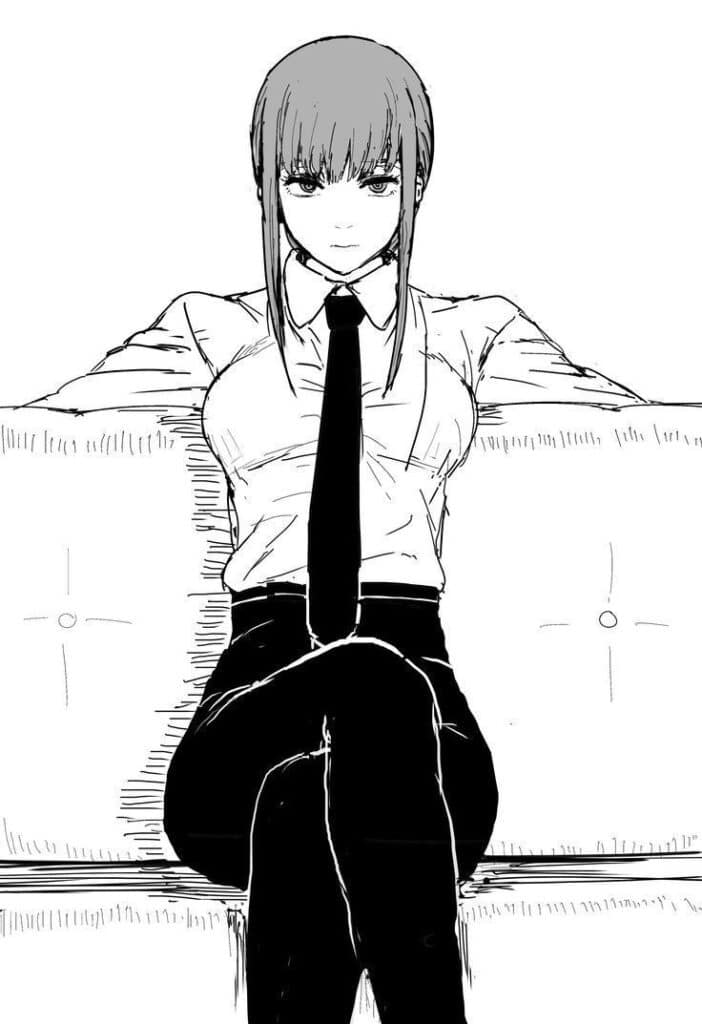
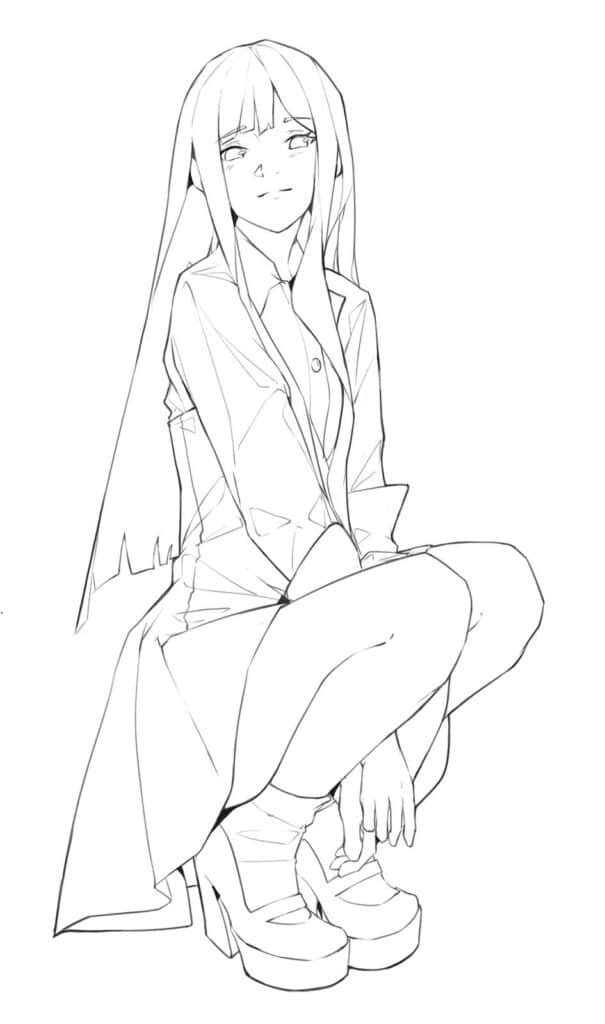
Shading, Coloring, and Finishing Touches
Proper shading creates depth and dimension in your anime girl drawings through strategic light placement and shadow work. Color selection and application techniques bring your character to life while maintaining the distinctive anime aesthetic.
Basic Shading Techniques for Depth
Start with cel shading, the most common anime technique. This method uses flat, solid areas of shadow without gradients.
Identify your light source first. Place it above and slightly to one side of your character for natural-looking shadows.
Add base shadows under the chin, beneath the chest, and along the inner arms and legs. Keep shadow edges clean and defined rather than soft or blended.
Use a two-tone system initially:
- Base color for lit areas
- Shadow color (20-30% darker) for shaded regions
Create depth by adding cast shadows where body parts overlap. The arm creates a shadow on the torso, and hair casts shadows on the face and shoulders.
Form shadows help define the body’s three-dimensional shape. Add subtle shadows along the sides of the torso and legs to show their cylindrical form.
Choosing and Applying Colors
Select a limited color palette of 3-5 main colors to maintain visual harmony. Warm colors work well for skin tones, while cooler colors suit hair and clothing accents.
Use desaturated colors for a more professional anime look. Overly bright or saturated colors can appear harsh and amateur.
Apply colors in layers:
- Base skin tone (peachy or warm beige)
- Hair base color
- Clothing colors
- Eye colors
Color temperature matters significantly. Warm lights create cool shadows, while cool lights produce warm shadows.
Keep skin tones consistent across all body parts. Slight variations in saturation can add interest without breaking realism.
Blush and color accents on cheeks, nose, and ears add life to your character. Use pink or orange tones sparingly for natural results.
Adding Highlights and Shadows
Rim lighting creates separation between your character and the background. Add thin bright lines along the character’s silhouette where light hits the edges.
Place primary highlights on raised surfaces like the nose bridge, cheekbones, shoulders, and chest. Keep highlights small and precise.
Hair highlights follow the hair’s flow and volume. Add bright streaks along the top sections where light naturally hits.
Reflected light appears in shadow areas where light bounces from surrounding surfaces. Use colors slightly lighter than your shadow tone.
Create ambient occlusion in deep recesses like armpits, between fingers, and where clothing meets skin. These areas receive minimal light and appear darkest.
Subsurface scattering makes skin look translucent. Add subtle warm tones in areas where light passes through thin skin, like ears and fingertips.
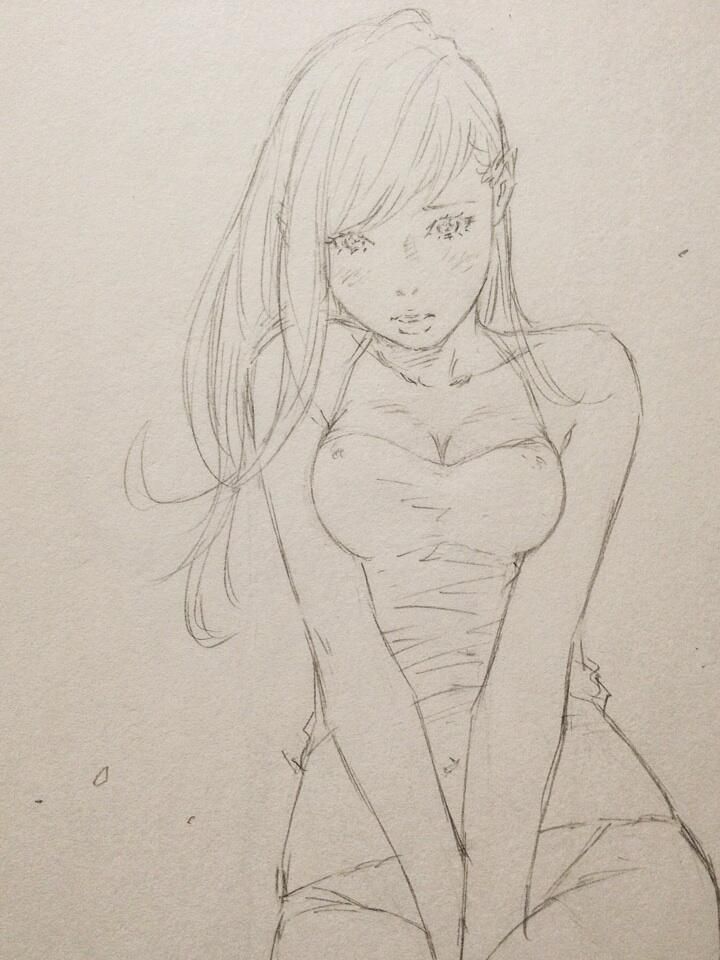
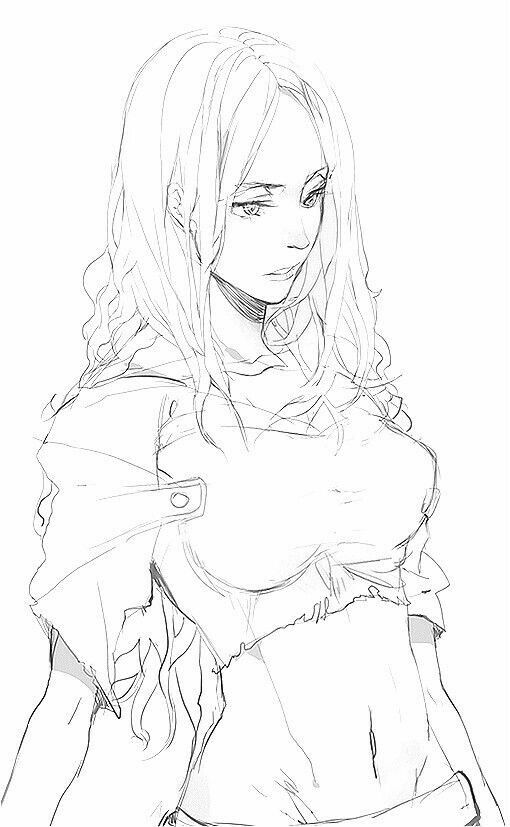
Tips for Practice and Skill Improvement
Consistent practice with structured routines and diverse reference materials accelerates your anime girl drawing skills. Engaging in drawing challenges provides motivation and exposes you to new techniques.
Effective Practice Routines
Set aside 15-30 minutes daily for focused drawing practice. Short, consistent sessions produce better results than sporadic long drawing marathons.
Start each session with basic gesture drawings. Spend 2-3 minutes sketching simple poses to warm up your hand and eye coordination.
Dedicate specific days to different body parts. Monday for torsos, Tuesday for arms and hands, Wednesday for legs and feet creates systematic skill building.
Track your progress by dating your sketches. Compare drawings from previous weeks to identify improvement areas and celebrate your growth.
Practice the same pose multiple times from different angles. This repetition builds muscle memory and deepens your understanding of three-dimensional form.
Use a timer for focused practice sessions. Set 5-minute intervals for quick sketches, then gradually increase duration as your concentration improves.
Studying References and Poses
Collect photo references of real people in various poses. Understanding actual human anatomy improves your anime stylizations significantly.
Study professional anime artwork and analyze their proportional choices. Notice how artists simplify complex anatomy while maintaining believable structure.
Pinterest and art reference websites offer extensive pose libraries. Create boards organized by pose types: action poses, sitting positions, dynamic movements.
Practice drawing from life when possible. Sketch people in coffee shops, parks, or public spaces to understand natural body language and weight distribution.
Use pose reference apps that offer 3D models you can rotate and adjust. These tools help visualize challenging angles and lighting conditions.
Compare your drawings directly with references. Place them side by side to identify proportional errors and areas needing adjustment.
Participating in Drawing Challenges
Join monthly drawing challenges like Inktober or character design prompts. These provide structured practice with specific themes and deadlines.
Follow hashtags on social media platforms where artists share daily drawing exercises. Engage with the community by commenting and sharing your own work.
Set personal challenges such as drawing 30 different poses in 30 days. Self-imposed goals maintain momentum when formal challenges aren’t available.
Participate in art forums and Discord servers focused on anime drawing. Share your work for constructive feedback and learn from other artists’ techniques.
Try speed drawing challenges where you complete sketches within strict time limits. This improves your ability to capture essential details quickly.
- 726shares
- Facebook0
- Pinterest726
- Twitter0
